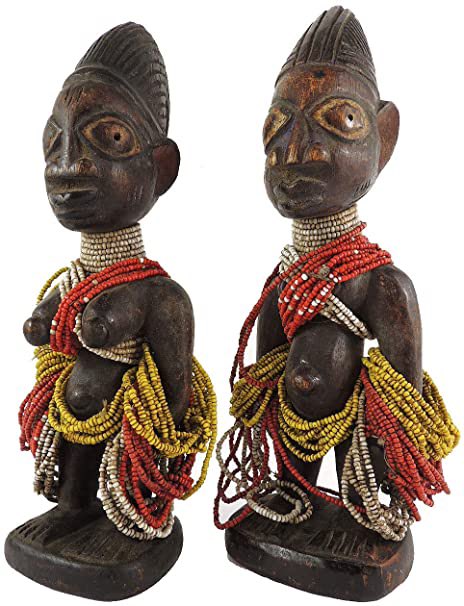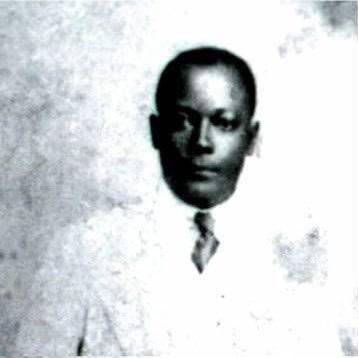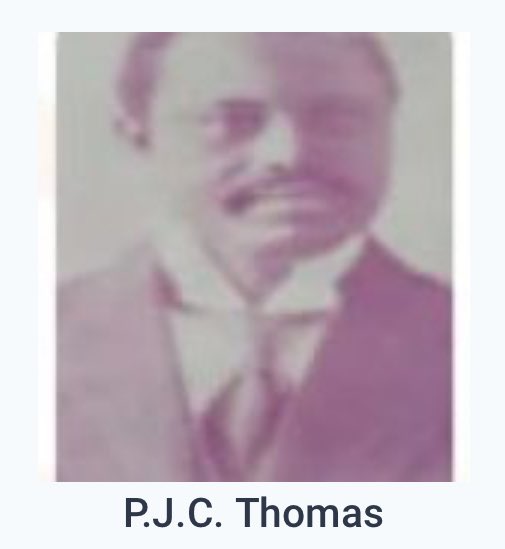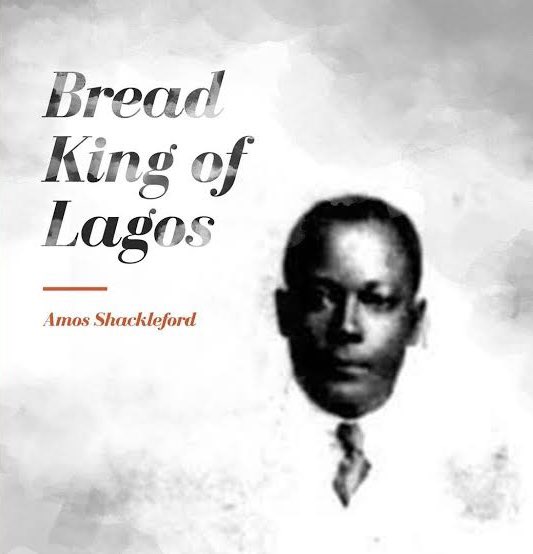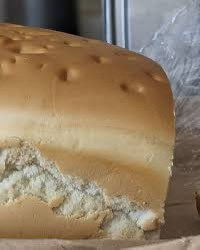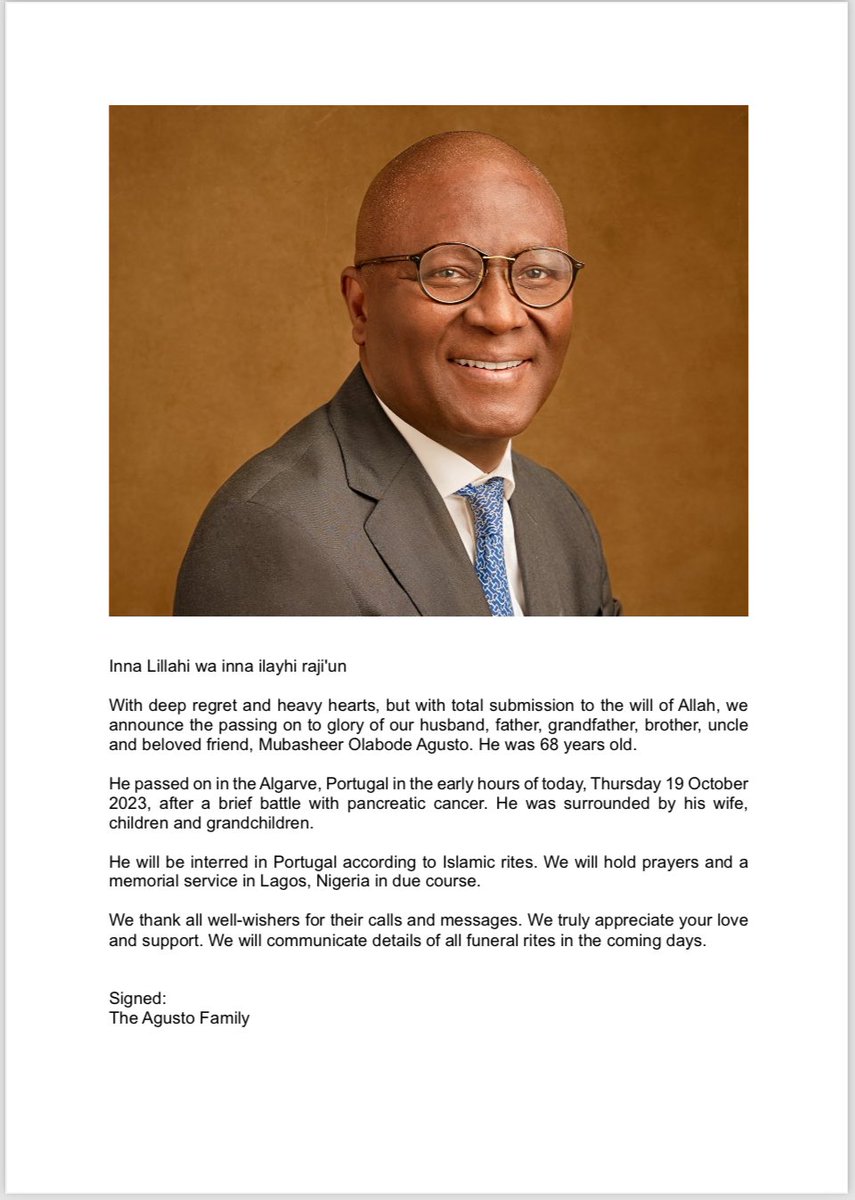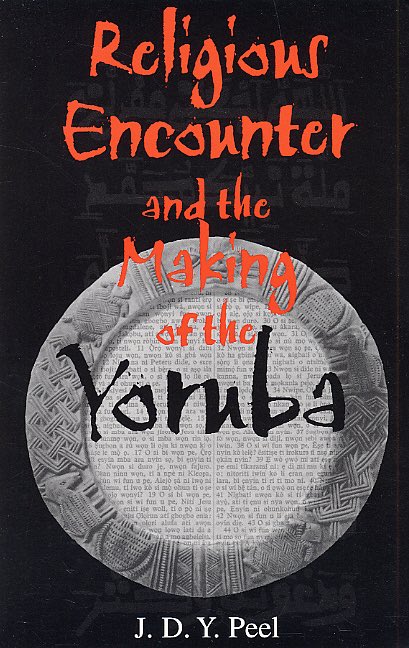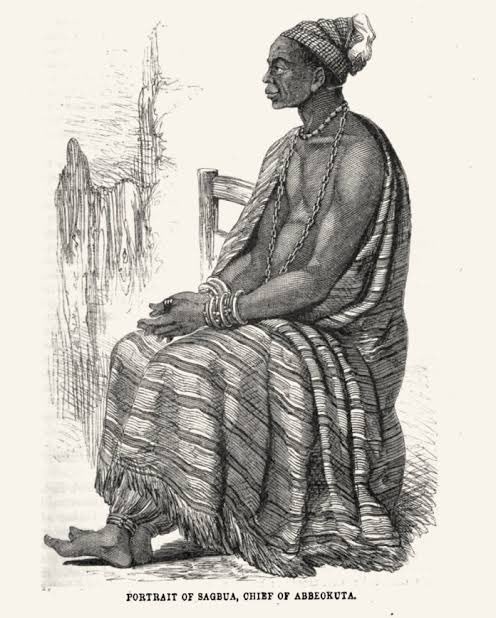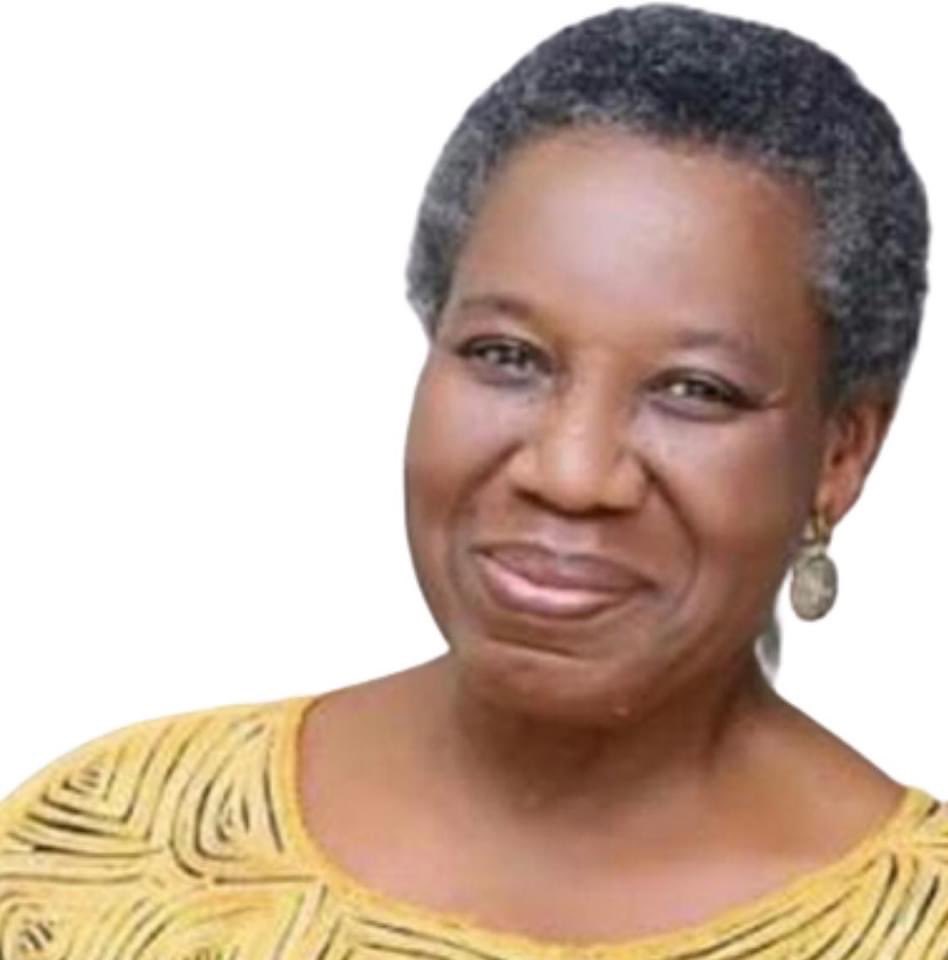The Yoruba of Nigeria and Benin Republic are known for having an extraordinarily high rate of multiple births.
The rate of twin births is one of the highest in the world; 45 of every 1,000 births (in the United States it
is 28.9 of every 1000).
The rate of twin births is one of the highest in the world; 45 of every 1,000 births (in the United States it
is 28.9 of every 1000).
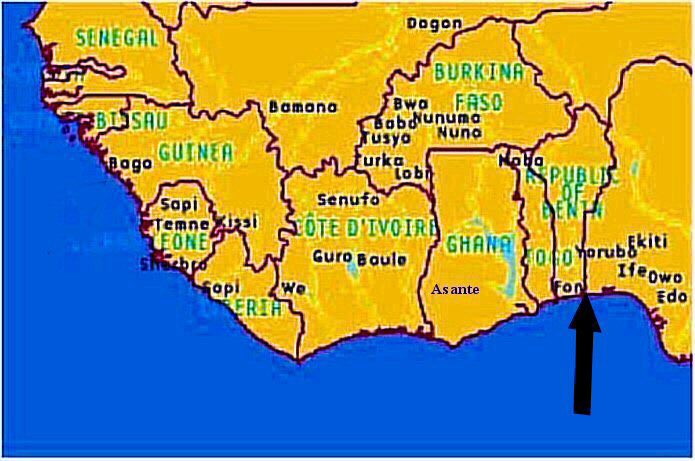
There was also a very high mortality rate; half of the twins die shortly after birth.
In much earlier times, new-born twins, or ibeji, as they are called, were believed to be evil, monstrous abnormalities
and infanticide was a common practice.
In much earlier times, new-born twins, or ibeji, as they are called, were believed to be evil, monstrous abnormalities
and infanticide was a common practice.
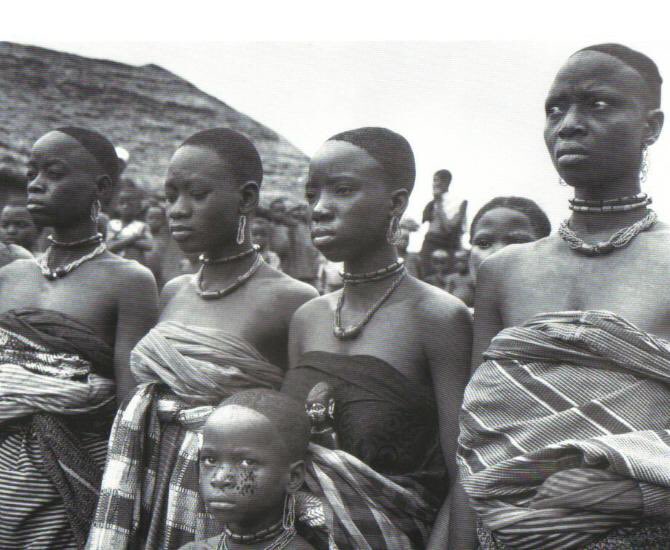
However, such beliefs and practices were later superseded and reversed, and by the middle of the 18th century twins came to be seen as a blessing; theywere awarded the status of minor deities, called Orishas, and their arrival was viewed as an omen of good fortune for the family. 



By the 19th century the cult of the Ibeji was firmly established and continues to this day in many families.
The death of one
or both twins is regarded as a great calamity for the family, one which requires immediate appeasement of the soul of the deceased child.

The death of one
or both twins is regarded as a great calamity for the family, one which requires immediate appeasement of the soul of the deceased child.
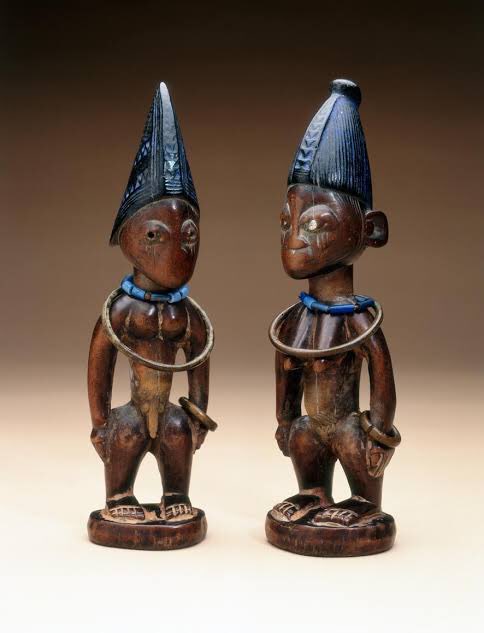
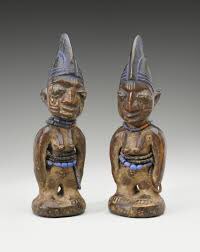
The first born twin, whether a boy or a girl, is always called Taiwo, meaning ‘having the first taste of the world’, whereas the second is named Kehinde, meaning ‘arriving after the other’. 
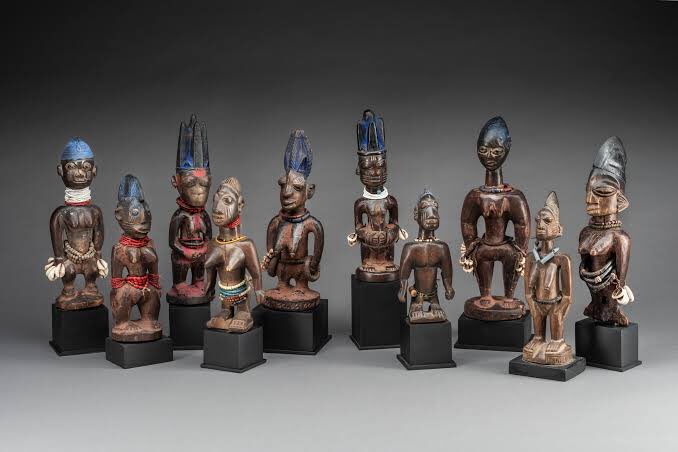
Although being born first, Taiwo is considered as the younger twin. His senior Kehinde is supposed to send out his partner to see what the outside world looks like. 
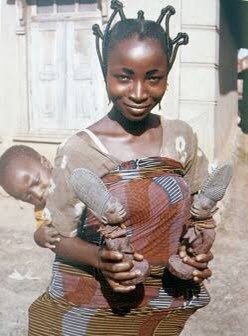
As soon as Taiwo has given a signal by crying, Kehinde will follow. Kehinde is supposed to be more careful, more intelligent and more reflective, while Taiwo is believed to be more curious
and adventurous, but also more nonchalant (Olaleye-Oruene, 1983; Stoll & Stoll, 1980).
and adventurous, but also more nonchalant (Olaleye-Oruene, 1983; Stoll & Stoll, 1980).
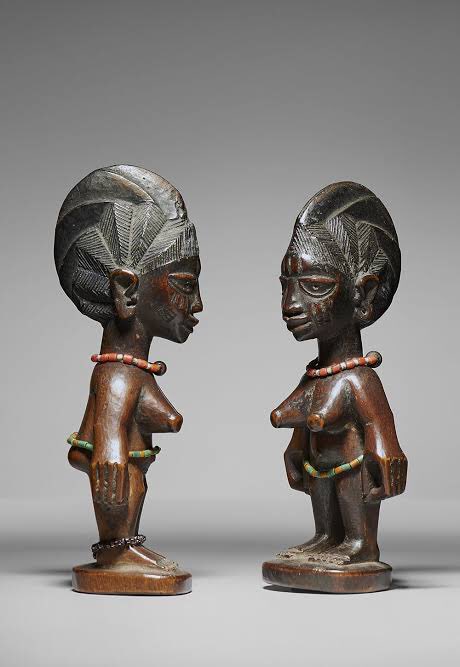
Though the cause of the high rate of twin births among Yoruba women has not been established, the cultural
grieving process is well documented and may be observed in the carving of a figure known as Ere Ibeji.
grieving process is well documented and may be observed in the carving of a figure known as Ere Ibeji.
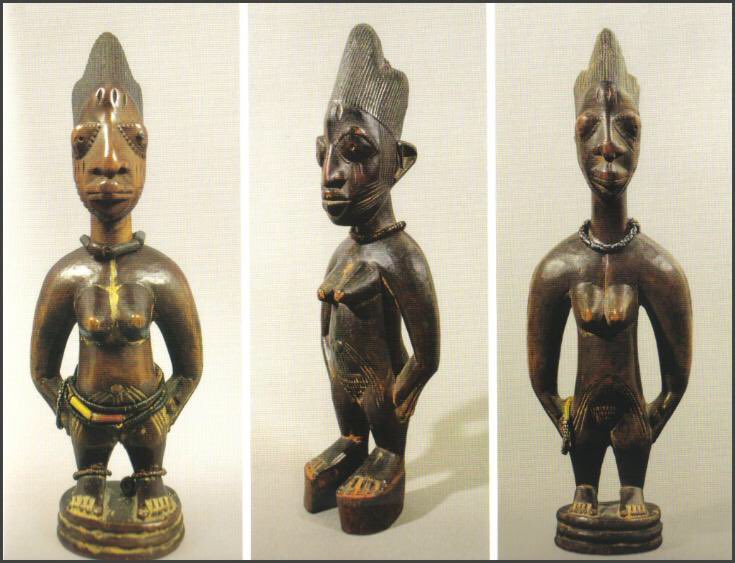
The Ere Ibeji, both represents the lost child and serves as a ritual point of contact with its soul. The carving of the Ere Ibeji is commissioned under the guidance of an Ifa diviner, a Babalowo, whom the parents consult in selecting the particular artist who will do the work. 
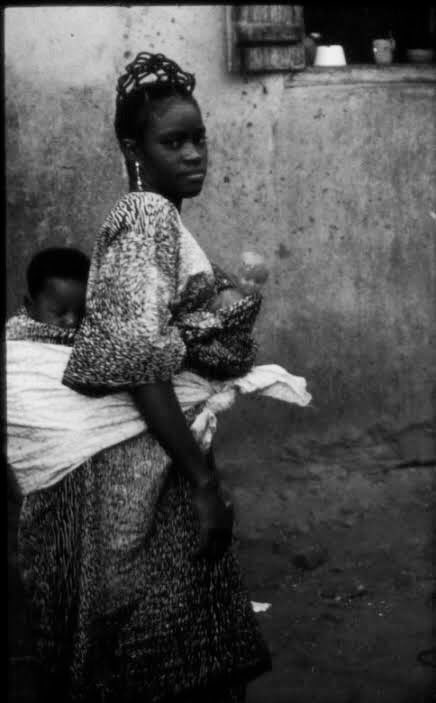
The completed ibeji figure is carved as an adult, rather than as the deceased infant, in a mythological form that depicts the concentrated calm of a Yoruba artist. When the carving is completed, the artist is given a feast and payment as determined by the Orishas. 


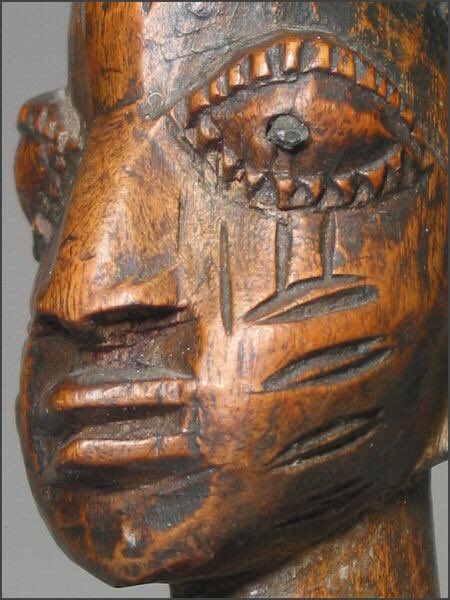
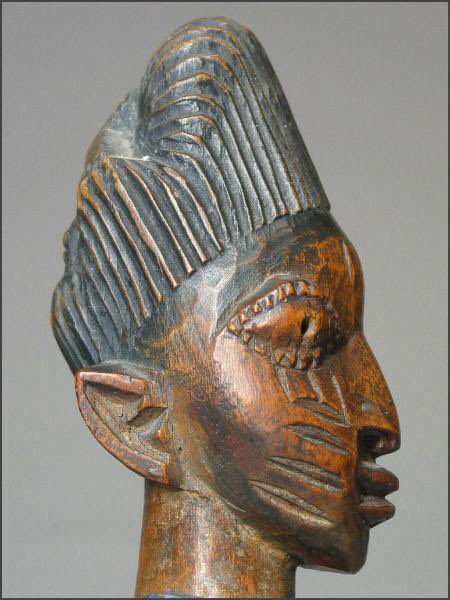

Once the figure is brought to the family dwelling, it is placed on a shrine dedicated to Elegba with the hope that the Orisha or soul, which was split in two parts when the twins were born, will now again reside in the figure that represents the dead twin. 
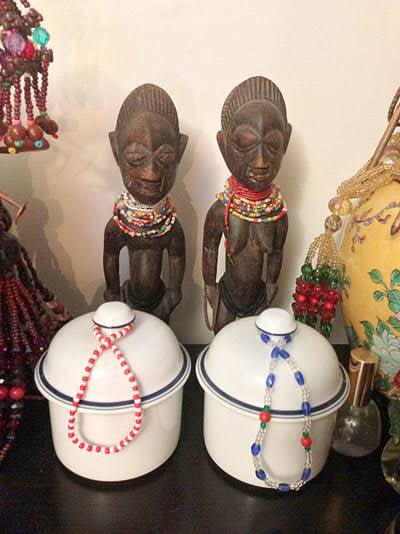
The sculpted figure is treated and cared for as if it were alive. It is rubbed in sacramental oil, washed, fed, clothed, sung to and prayed to. It is kept standing during the day, and is laid down at night. Often it will be dressed in the same clothing as the living twin. 


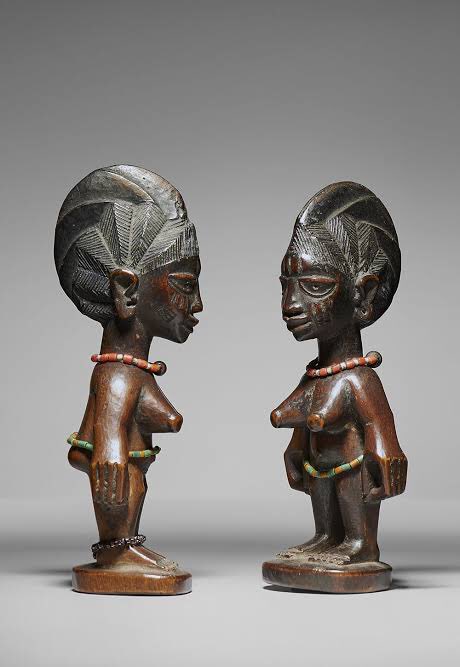
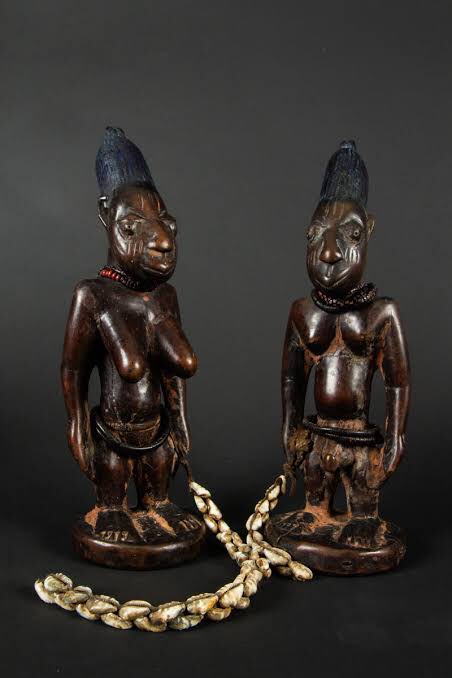
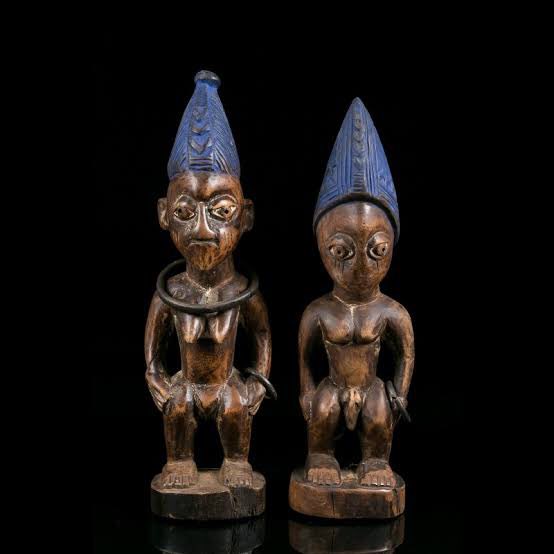
Sometimes it is decorated in a beaded vest or shown with raised sandals, indicating possible royal connections. They attend to the figure as if it was their child, they feed and wash it. The headdress will be constantly rubbed with Indigo. Yes 


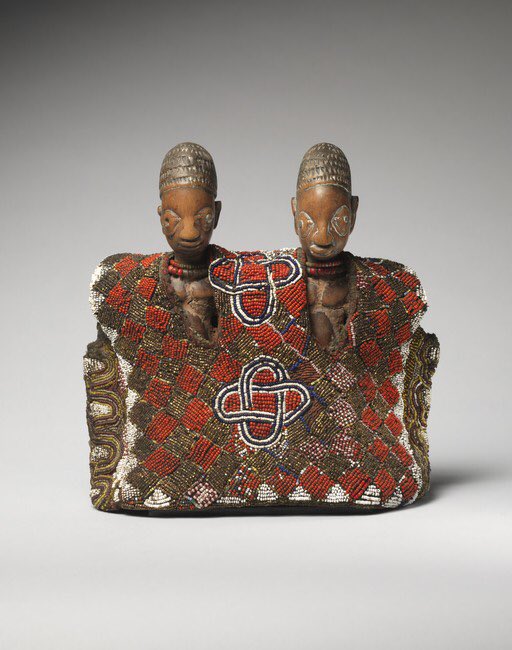
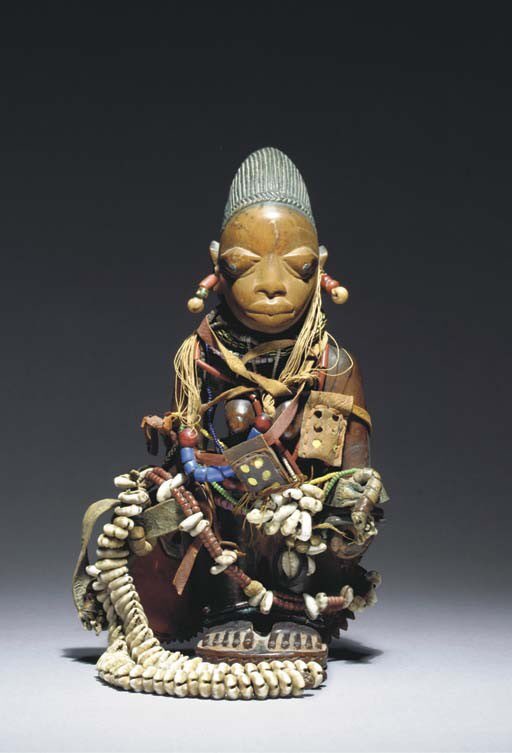
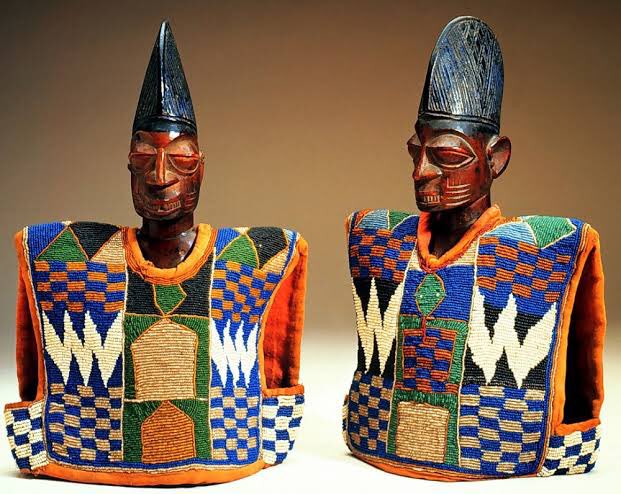
And he body will be rubbed with red wood powder, and as a sign of dignity (in wealthy families), some Ibedji get pearl cloaks.
The responsibility of caring for the ibeji is borne by the mother and female family members of subsequent generations.

The responsibility of caring for the ibeji is borne by the mother and female family members of subsequent generations.
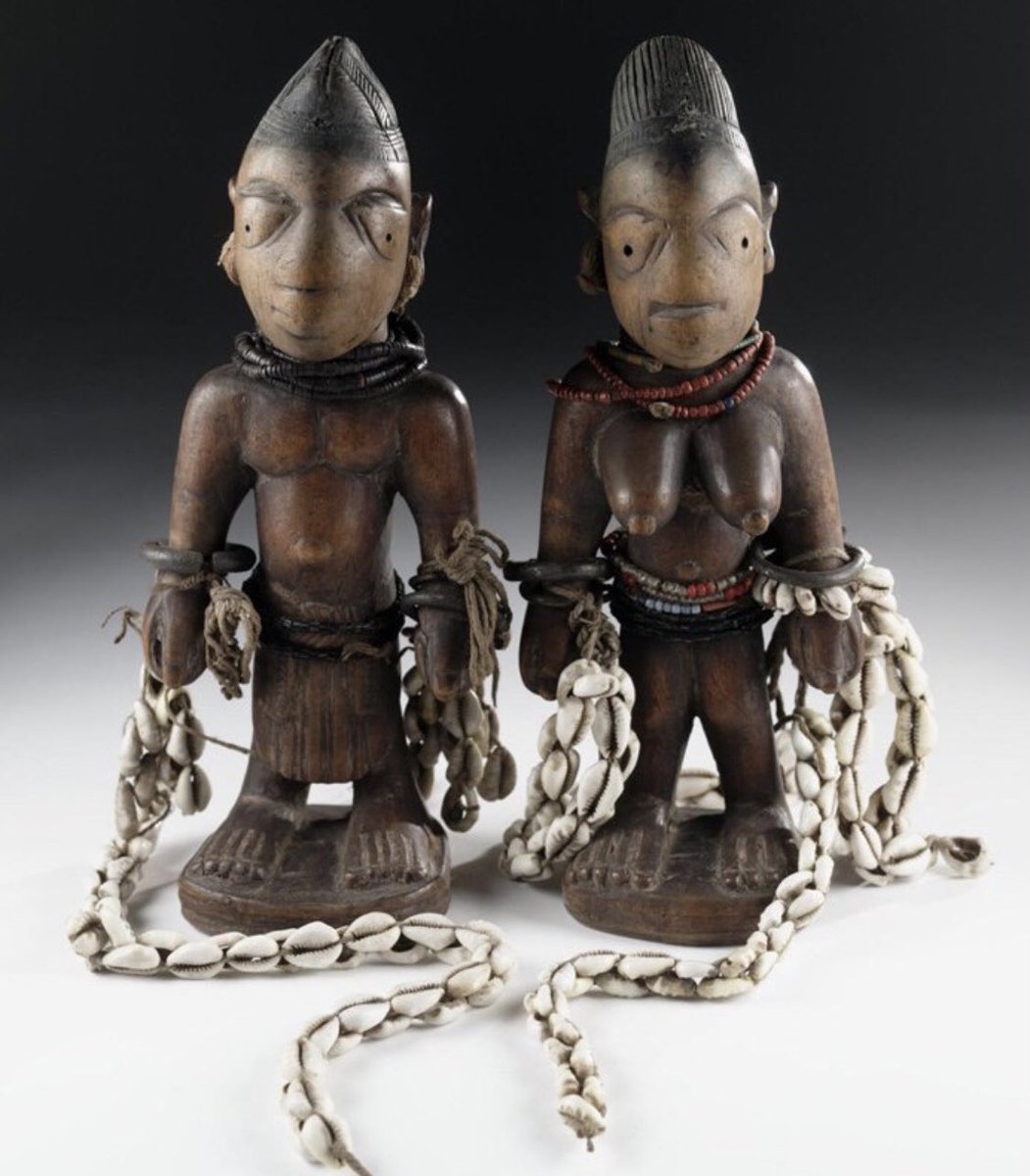
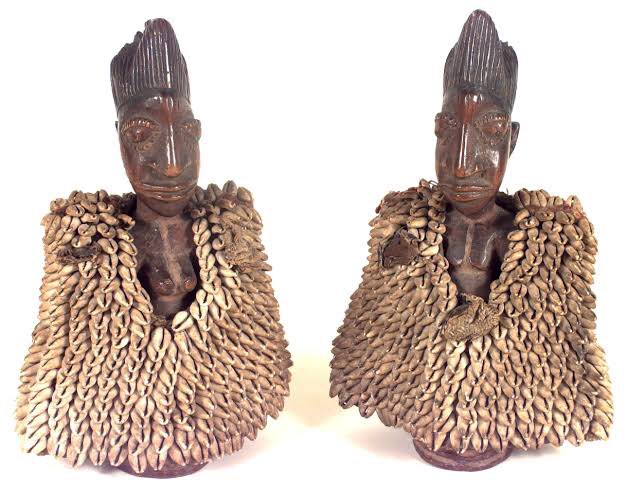
The sculpture is expected to avert evil from the household, strengthen the manifestations of family love, stare down death, illuminate the pathway through the valley of immortality, and bring good fortune to all who treat it with respect and offer it tokens of affection. 


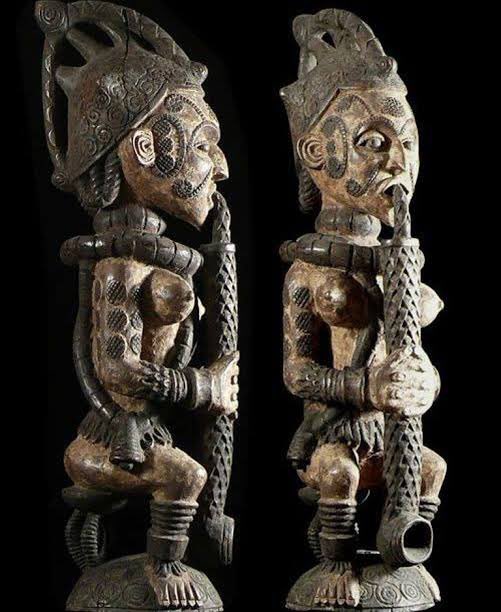
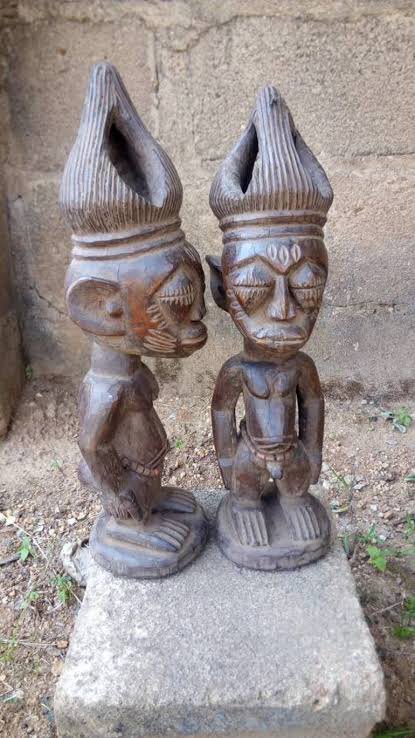

Common distinguishing features of Ere Ibeji and the current practice.
randafricanart.com/Yoruba_Ibeji_2…

randafricanart.com/Yoruba_Ibeji_2…
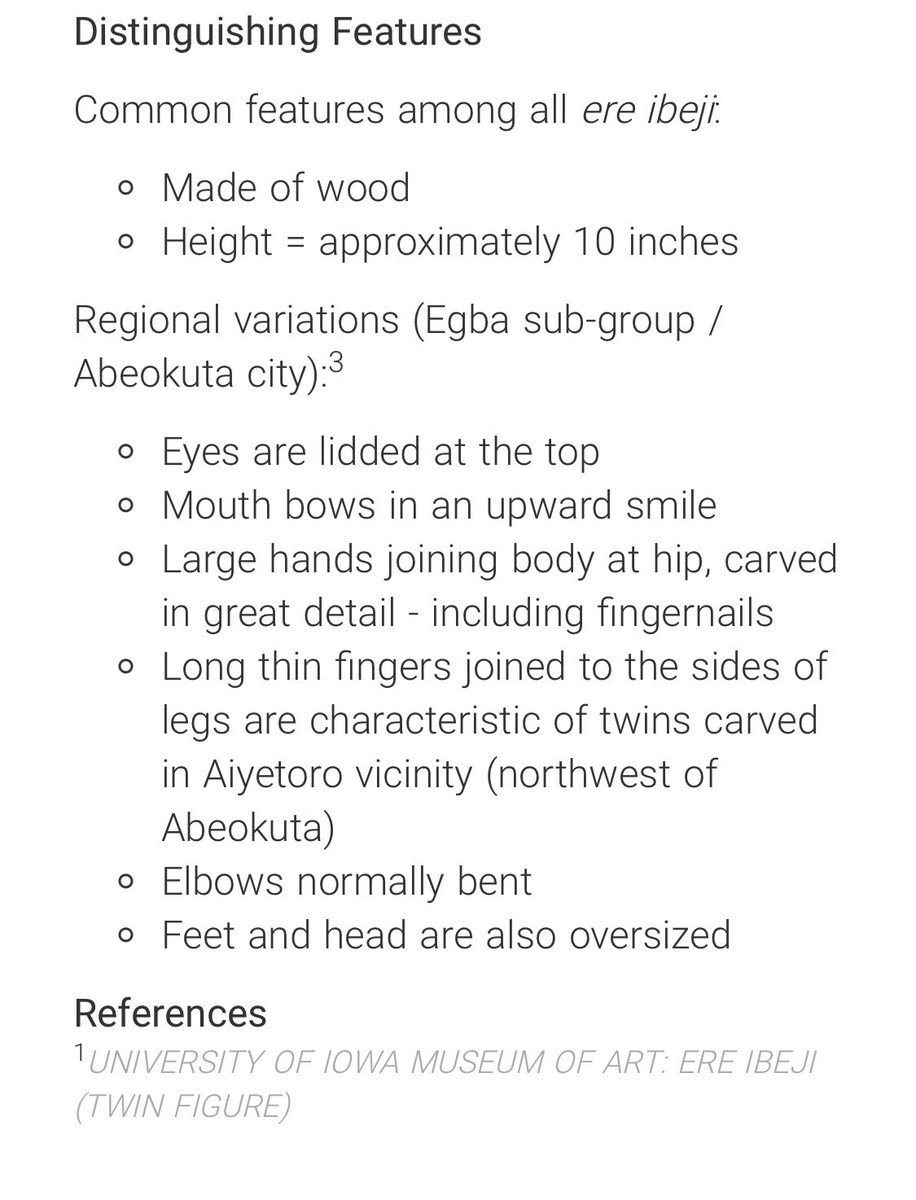
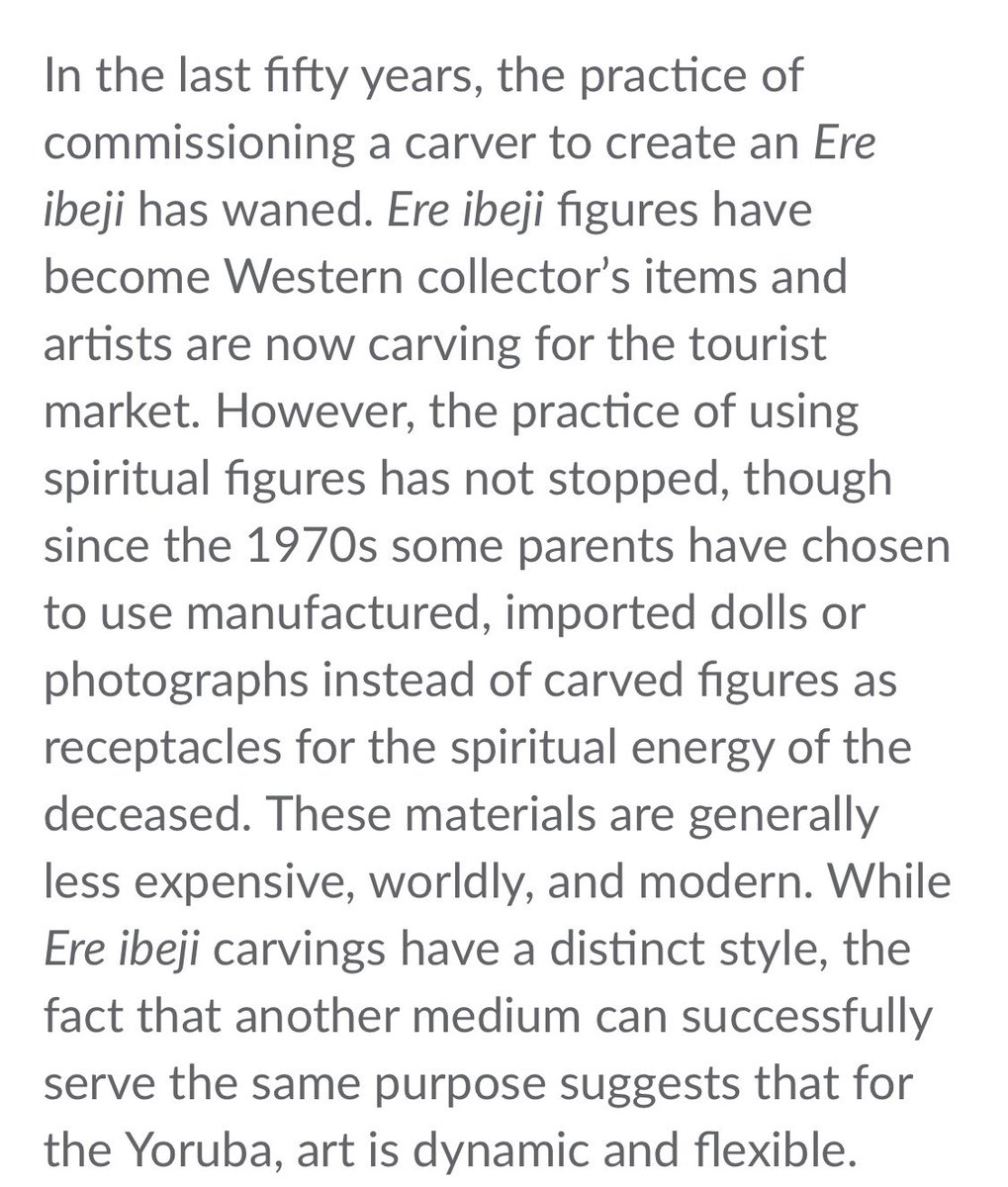
• • •
Missing some Tweet in this thread? You can try to
force a refresh


